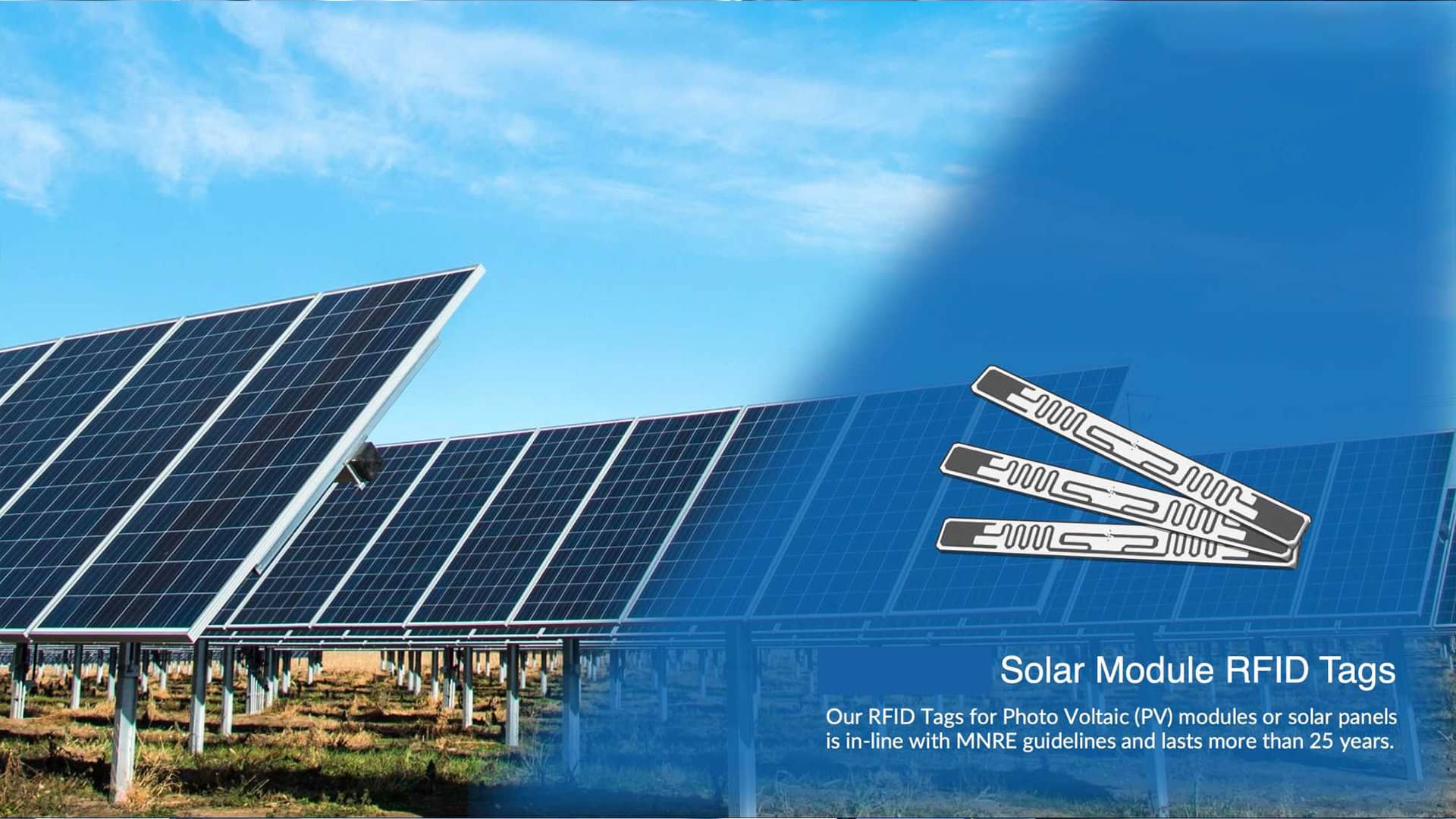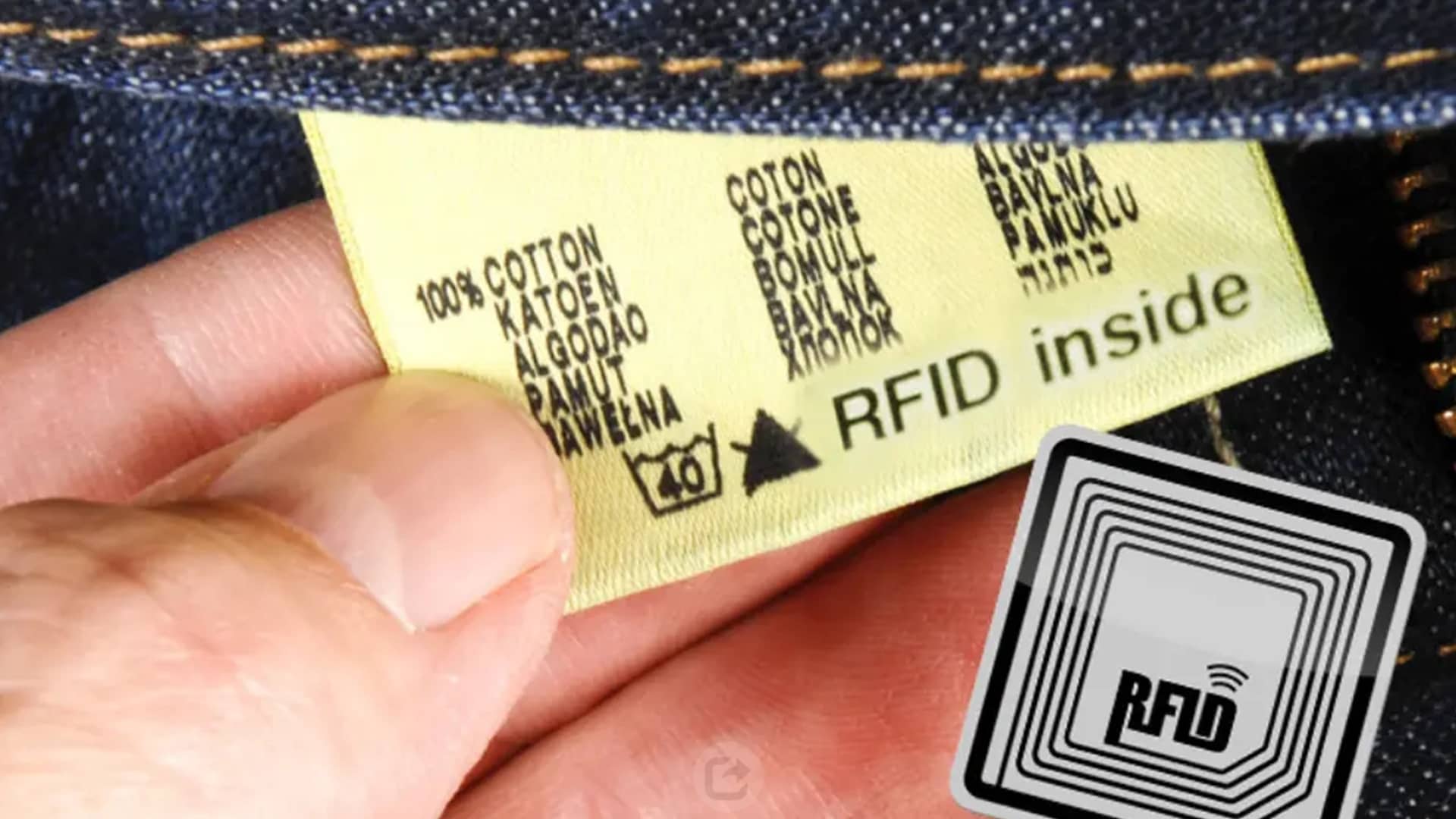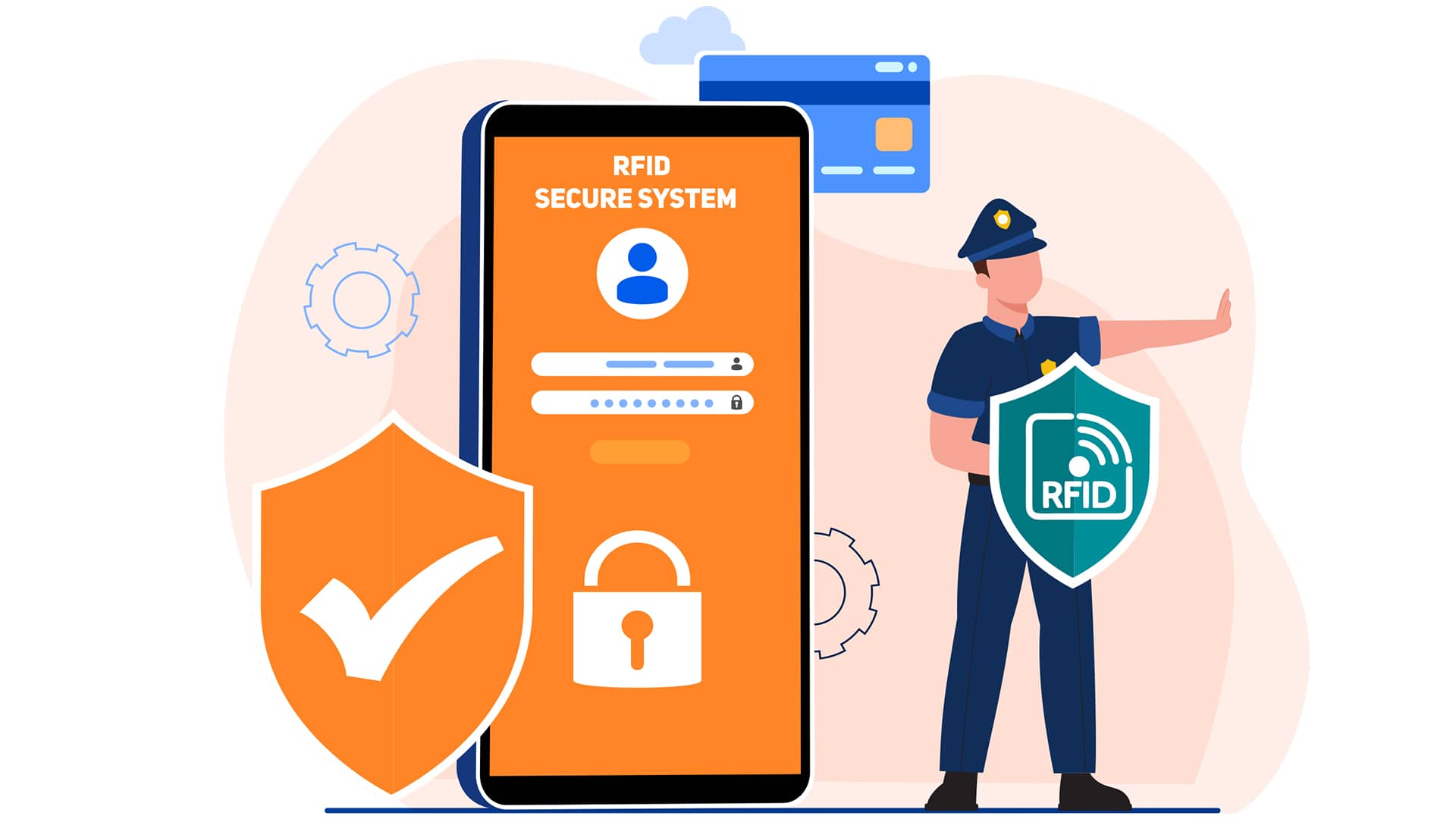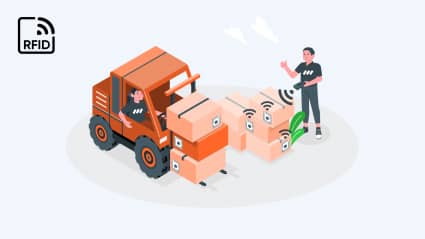 Call at :
+86 18681515767
Call at :
+86 18681515767
 Email :
marketing@jtspeedwork.com
Email :
marketing@jtspeedwork.com
 Call at :
+86 18681515767
Call at :
+86 18681515767
 Email :
marketing@jtspeedwork.com
Email :
marketing@jtspeedwork.com

As global agriculture rapidly evolves toward digitalization and intelligence, the livestock industry is also experiencing a wave of technological transformation. Radio Frequency Identification (RFID) technology, a core component of the Internet of Things (IoT), has emerged as a key tool for driving the digital transformation of livestock farming. With its low cost, efficiency, and powerful data processing capabilities, RFID technology is revolutionizing traditional livestock production and management—from duck RFID leg bands to integrated smart farming systems. RFID works by using wireless radio signals to automatically identify and collect data. Its core components include tags, readers, and back-end systems. Tags are attached to target objects and contain a chip and antenna for storing information. Readers communicate with the tags to read or write data. Finally, the back-end system processes and stores the collected data. In livestock farming, passive RFID tags are widely used due to their lower cost and longer lifespan, making them ideal for animal identification and data recording. In practical applications, RFID technology has been integrated into multiple areas of livestock farming. First, in individual identification and tracking, RFID leg bands or wing tags equipped on each animal allow farmers to precisely identify and monitor their livestock. For example, duck RFID leg bands contain a unique identification number linked to growth cycles, vaccination records, and health status. With strategically placed RFID readers, farmers can track the location, activity, and well-being of animals in real time. In terms of health monitoring and disease prevention, RFID tags integrated with temperature sensors can measure an animal's body temperature. If abnormal temperature readings are detected, the system will trigger an alert, allowing farmers to take swift preventive measures and reduce the spread of disease. RFID also plays a role in feeding and environmental management. By recording feeding histories and health data for each animal, smart feeding systems can provide precise and customized feeding plans. This reduces feed waste, enhances efficiency, and promotes healthier animal growth. Furthermore, RFID systems integrated with environmental sensors can monitor temperature, humidity, and air quality, ensuring that the livestock's living conditions remain optimal. Additionally, in logistics and supply chain management, RFID tags record production, transportation, and sales data throughout the supply chain. This significantly improves food traceability, ensuring safety and enhancing consumer trust. For example, in a modernized duck farm, RFID technology is used to achieve intelligent management. From the hatching stage, each duck is equipped with an RFID leg band that records its unique identity and synchronizes with a back-end system. Automatic readers installed in the duck sheds record daily movement and behavioral patterns. If a duck’s activity...
With the continuous advancement of technology, agriculture is gradually entering the digital age. The combination of Internet of Things (IoT) technology and Radio Frequency Identification (RFID) has driven the intelligent transformation of agriculture. RFID applications in agriculture, especially in poultry tracking and smart crop management, have shown great potential, bringing revolutionary changes in improving production efficiency, optimizing resource management, and ensuring food safety. 1. RFID in Poultry Tracking In the livestock farming industry, poultry management is a complex process. Traditional methods rely on manual recording and labeling, which can result in errors and inefficiencies. RFID technology, however, allows for real-time tracking of poultry health, movement, feed intake, and other information by attaching RFID tags to the animals, greatly improving management accuracy and efficiency. RFID Footbands and Wing Tags RFID tags are typically installed on the feet or wings of poultry as identification markers. These tags contain unique identification numbers that can be read by RFID readers within a certain range. Using this data, farmers can track the growth, vaccination records, and health status of each bird. For instance, RFID can track the growth stages, vaccination history, and health conditions of ducks, helping farms identify and address issues promptly. Health Monitoring and Disease Prevention RFID technology also enables real-time monitoring of poultry health. When combined with sensors, RFID can detect physiological data such as temperature and heartbeat. If any abnormality is detected, the system can automatically trigger an alert, allowing farmers to investigate further or isolate affected animals. This intelligent early warning system reduces the risk of disease spread and improves the overall health of livestock. Data Analysis and Management Optimization RFID technology enables the digital and automated recording and analysis of all poultry-related data. Farm managers can track the entire process from feeding, vaccination, to slaughter, ensuring that all stages are properly documented. This not only improves the transparency of farm management but also aids in quick traceability in case of quality issues, ensuring food safety. 2. RFID in Smart Crop Management RFID technology is not only used for tracking and managing plants but also plays a significant role in soil monitoring, irrigation control, and crop growth analysis. By integrating sensors and data analytics platforms, RFID supports smart agricultural practices in crop management. Crop and Soil Monitoring In smart crop management, RFID technology can be combined with soil sensors to help farmers monitor key soil conditions such as moisture, temperature, and pH levels in real time. When the soil conditions are not optimal for crop growth, the system can automatically trigger the irrigation system or send a warning to farmers. Each plant can be equipped with a s...

As the energy industry undergoes digital transformation, companies face multiple challenges in efficiently monitoring equipment, optimizing resource allocation, and enhancing safety. Radio Frequency Identification (RFID) technology, a mature tool in the Internet of Things (IoT) domain, has demonstrated tremendous potential in addressing these issues. Through the coordinated operation of RFID tags and readers, energy enterprises can manage equipment and resources more effectively, supporting the industry's growth. An RFID system typically consists of tags, readers, and a backend management system. RFID tags, attached or embedded in energy equipment, pipelines, or key components, contain a microchip and an antenna that store essential information such as equipment status and operational parameters. Depending on the complexity of the application, tags can be passive (powered by the reader's signal) or active (equipped with batteries for extended signal range). RFID readers emit radio frequency signals to activate the tags, communicate with them, and upload the collected data to a backend system. This process enables automated data collection and real-time updates of equipment information. RFID technology offers significant advantages in equipment monitoring. Tags store operational parameters, and readers periodically scan and transmit the data to backend systems for analysis. When equipment malfunctions or anomalies occur, the system provides real-time alerts to ensure timely maintenance and minimize downtime. Handheld RFID readers improve inspection efficiency, allowing staff to quickly retrieve equipment data with a simple scan, while fixed readers enable continuous 24-hour monitoring. Additionally, RFID-supported data helps optimize maintenance schedules, extending equipment lifespan and reducing wear and tear from misuse or poor maintenance. For instance, an oil and gas company implemented RFID tags on critical equipment and achieved a 30% reduction in equipment failure rates by monitoring pipelines and operational conditions in real time. RFID is also highly effective in resource allocation. By attaching tags to tools, supplies, or fuel containers, energy companies can track transportation in real-time, ensuring transparent oversight of material status and location, thus improving supply chain efficiency. For energy consumption monitoring, RFID tags record real-time data on electricity, natural gas, or other energy usage, enabling companies to analyze efficiency and optimize allocation strategies. For example, power plants can use RFID to monitor fuel inventory and adjust delivery plans in real-time, minimizing resource waste. In the wind and solar energy sectors, RFID can track spare parts' locations and conditions, ensuring resources are quickly deployed when needed. A power company that deployed RFID tags on maintenance tools reduced tool loss and improved maintenance efficiency by 25%. The advantages of RFID technology make it highly valued...

As the fashion and retail industries undergo digital transformation, businesses are increasingly prioritizing supply chain transparency, precise inventory management, and enhanced personalized services. Radio Frequency Identification (RFID) technology has emerged as a core tool enabling these changes, helping brands respond to rapidly evolving market demands. From inventory optimization to personalized services, RFID demonstrates unparalleled value. 1. How RFID Readers and Tags Work An RFID system mainly consists of two components: RFID tags and RFID readers. RFID Tags: RFID tags are embedded in clothing, footwear, or accessories. These tags contain a tiny microchip and antenna. The chip stores unique identification information such as product ID, production batch, color, and size. Tags can be passive (powered by the reader's radio frequency signal) or active (equipped with a battery for a larger reading range). RFID Readers: RFID readers emit radio frequency signals to communicate with tags, activating them, reading their data, and transferring it to backend systems. Depending on the use case, readers can be handheld (for mobile inventory checks) or fixed (installed at entrances, shelves, or warehouse gates). The process works as follows: When a tag enters the reader’s signal range, the antenna captures the signal and sends it to the chip. The chip decodes the signal and transmits the stored information to the reader. The reader sends the data to a backend management system for storage and analysis. 2. RFID in Inventory Optimization: Applications and Advantages Inventory management is a critical component of the fashion industry, directly impacting supply chain efficiency and customer satisfaction. RFID significantly enhances accuracy and efficiency in this domain. Real-Time Inventory Monitoring: RFID technology allows real-time tracking of inventory, identifying the exact location and status of each item. Unlike traditional barcodes, RFID can read multiple tags simultaneously, drastically reducing inventory-checking time. Efficient Restocking and Allocation: When inventory falls below a preset threshold, RFID systems can automatically issue restocking alerts, ensuring popular items are always in stock. The high accuracy of data helps brands optimize inventory allocation, avoiding waste or overstocking. Minimized Human Errors: Manual inventory checks are prone to errors. RFID automates data collection, reducing the risk of mistakes and increasing accuracy. Transparent Supply Chain: RFID tags record the entire lifecycle of products, from production to sales. Brands gain a clear view of inventory status across all stages, supporting better decision-making. Case Study: An international fashion brand implemented RFID systems in its warehouses and stores, reducing inventory audit times from 48 hours to 2 hours and achieving over 98% inventory accuracy. 3. RFID Enables Personalized Services Beyond inventory optimization, RFID enhances customer experie...

With the rapid advancement of information technology, the concept of "smart campuses" has become a new direction for managing universities and enterprises. To achieve goals of safety, efficiency, and intelligence, many campuses and enterprises are incorporating RFID (Radio Frequency Identification) technology for identity verification, attendance management, asset tracking, and access control. RFID, which uses radio waves to read and transmit data, enables fast and precise information management, offering a transformative management experience. How RFID Works: Collaboration Between Readers and Cards RFID technology comprises two key components: RFID readers and RFID cards, which interact through radio waves. RFID Cards: These small electronic tags include a chip and an antenna. The chip stores a unique Electronic Product Code (EPC) and other essential information, while the antenna transmits the stored data via radio waves. RFID Readers: These devices read and write information on RFID cards. Equipped with antennas, receivers, and processors, readers emit radio waves to activate the chip in an RFID card when it enters the detection range. The chip responds by transmitting the stored information back to the reader, which then processes and sends the data to a backend system for further use. This contactless communication makes RFID far superior to traditional barcodes and magnetic stripe cards in terms of speed and convenience. RFID systems can also identify items from a distance and read multiple tags simultaneously, greatly enhancing their flexibility in various applications. Applications and Benefits of RFID in Campus Management Identity Verification and Access Control RFID cards are widely used for identity verification and access management in smart campuses. For example, students with RFID-enabled campus cards can quickly gain access to dormitories, libraries, or laboratories. When a student passes through an RFID-enabled gate, the system automatically reads the card’s information, verifies it against the database, and unlocks the gate upon approval. This contactless verification method improves efficiency and reduces the security risks associated with lost or duplicated cards. During public health crises, the touch-free nature of RFID further minimizes physical contact, enhancing campus safety. Attendance and Academic Activity Management RFID also streamlines class attendance and the organization of academic activities. Students only need to carry their campus cards through RFID-equipped entrances to have their attendance automatically recorded, eliminating the time-consuming process of manual roll calls. In addition, RFID simplifies participant verification and attendance tracking for academic events, conferences, or large campus activities. Some institutions even integrate RFID with credit systems, automatically logging students' participation in events to support academic evaluations. Asset Management and Theft Prevention Managing assets...
RFID is a non-contact automatic identification technology that uses radio frequency signals to automatically recognize, transmit data, and track objects through electronic tags, readers, and antennas. Compared to traditional barcode technology, RFID has several advantages: Non-contact Reading: RFID tags can be read without physical contact with the reader, avoiding the wear and tear issues common with traditional barcodes. Efficient Reading: RFID can read multiple tags at once, with much faster identification speeds than barcode scanners, making it ideal for large-scale item management. Long-range Identification: RFID has a longer reading distance, reaching several meters, which facilitates remote management and real-time tracking. Strong Data Storage and Update Capabilities: RFID tags can store not only basic identification information but also more complex data, such as sensor data or historical records. In library and archives management, RFID is primarily used for book borrowing, returning, storage, inventory management, and security, significantly improving automation and precision in management. 2. Applications of RFID Technology in Library and Archives Management 1. Book Borrowing and Returning Management The introduction of RFID technology has completely transformed the book borrowing and returning process. Traditionally, library borrowing processes relied on manual barcode or magnetic strip scanning, which was inefficient, error-prone, and had limitations in the number of items that could be processed at one time. With RFID, each book is embedded with an RFID tag, and readers can simply place books on a self-checkout device where the RFID reader automatically identifies the book information and processes the borrowing transaction. This automated system greatly reduces the time required and enhances the user experience. RFID technology also enables real-time tracking of borrowing statuses, allowing libraries to easily monitor book circulation and manage resources more effectively. For example, borrowing records can be uploaded to the cloud system in real-time, which helps library managers view, analyze, and adjust resources. 2. Inventory Management Traditional inventory management typically involves manual checking of each book, which is time-consuming, labor-intensive, and prone to errors. With RFID technology, libraries can quickly scan entire bookshelves with an RFID reader, and the system automatically records the status of all books. This not only improves the efficiency of inventory management but also reduces the likelihood of omissions or duplicate entries during the process. Furthermore, RFID enables dynamic tracking of books, allowing libraries to know the exact location and status of every book at any given moment, thus preventing misplacement or incorrect categorization due to human error. 3. Archives Management and Traceability RFID technology has also made a significant impact on archives management. Traditional archives man...

With technological advancements and the continuous evolution of payment methods, RFID (Radio Frequency Identification) technology has become an essential component of modern payment systems. Due to its convenience, speed, and improved user experience, RFID payments have seen widespread application in areas like transportation and retail. However, despite the benefits RFID technology brings to payment systems, challenges remain, especially concerning data security and privacy protection. Applications of RFID Payments Transportation Payments In many urban public transportation systems, RFID is used for contactless payments on subways and buses. Passengers can quickly pay by using an RFID-equipped transportation card, streamlining the payment process, reducing wait times during peak hours, and improving the efficiency of urban transit systems. Retail Payments RFID payment systems are also becoming increasingly popular in the retail industry, particularly in supermarkets and convenience stores. Customers can make fast payments through RFID-enabled cards or smart devices, and some upscale stores even offer "checkout-free" shopping, where customers can select products and leave directly, with RFID automatically identifying purchased items and completing the transaction. This enhances the shopping experience, particularly in fast-consumption environments. Access Control and Ticketing Systems RFID is also widely used in access control systems in office buildings, schools, and tourist attractions. Users with RFID cards can enter quickly by simply swiping. Compared to traditional paper tickets or manual records, RFID greatly simplifies access management and ensures efficiency and accuracy. Challenges in RFID Payments Despite its potential, RFID payment systems face several significant challenges, including issues in data security, privacy protection, and interference. Data Security and Privacy One of the most significant challenges in RFID payment is data security and privacy. Communication between the RFID card and reader can be easily intercepted by unauthorized third parties, potentially leading to user data breaches. Ensuring secure RFID transmissions, especially in highly sensitive scenarios like banking payments, is a critical issue. To address this, payment systems can implement encryption and authentication technologies to enhance the security of RFID communication. Physical Security RFID chips are more vulnerable to damage than traditional cards, and if stolen or lost, they may lead to data breaches. This is particularly problematic in high-frequency usage scenarios, like transit cards, where the likelihood of physical damage is higher. Therefore, RFID card designs need to emphasize durability and features like waterproofing and shock resistance to extend their lifespan. Interference and Misreading RFID signals are prone to interference in multi-device environments, causing data transmission failures or delays. This is particularly problematic in ...

1. Overview of RFID Technology RFID (Radio Frequency Identification) is a technology that uses radio waves to automatically identify and transfer data of objects. An RFID system typically consists of three components: tags, readers, and a data processing system. RFID tags are attached to items and contain a unique identification code, which can communicate with an RFID reader through radio signals. The reader receives the signals from the tags and transmits the data to a computer system for processing. RFID technology enables non-contact data exchange, allowing real-time identification of items and greatly improving information processing efficiency. 2. Applications of RFID in Smart Warehousing The core goal of smart warehousing systems is to improve warehouse management efficiency, reduce labor costs, enhance inventory accuracy, and accelerate the flow of goods. RFID technology plays a key role in this process, and the following are its main application areas: 2.1 Automated and Accurate Inventory Counting Traditional inventory counting typically relies on manual scanning of barcodes or physical checks, which is time-consuming and prone to errors. In large warehouses, manual inventory counting is not only inefficient but also more likely to result in mistakes. RFID technology enables fully automated and real-time inventory counting. By installing RFID readers in the warehouse and attaching RFID tags to the items, warehouse personnel can obtain real-time inventory information simply by scanning quickly, without the need for manual verification. The RFID system can also automatically generate inventory reports and update inventory data in real time, avoiding omissions or errors in manual counting. 2.2 Item Tracking and Localization RFID technology allows for precise tracking and localization of items. In smart warehousing, RFID tags are attached to items or shelves, and RFID readers in the warehouse can obtain tag information in real-time and process it through the backend system, enabling real-time tracking of the item’s location. Whether it is incoming goods, outbound goods, or internal movement of items, the system can continuously update the location information of the items. This real-time tracking capability significantly reduces the chances of items being lost or stored incorrectly, improving the overall operational efficiency of the warehouse. 2.3 Efficient Inbound and Outbound Management RFID technology is widely used in inbound and outbound management. Traditional inbound and outbound management often requires manual entry of item information or barcode scanning, which is inefficient and error-prone. With an RFID system, warehouse personnel do not need to manually input or scan item information during the inbound and outbound processes. All item movement information, including incoming, outgoing, and transfers, is automatically recorded in the system. The RFID system can record the flow of every item in real-time, ensuring the accuracy of...
Categories
New Products
JT-6210 0-1m UHF RFID Desktop USB Reader Writer ISO18000-6C Read More
JT-7100 0-3m 860-960MHz UHF RFID Industrial Grade RFID Reader Read More
JT-8380 0-6m UHF RFID 860-960MHz Middle Range Integrated Reader Read More
JT-P983 Industrial Tablet Pad RFID Handheld Reader Grade Long Range Android UHF Terminal Bluetooth RFID Reader For Warehouse Read More
JT-1550 Small Mini HF RFID 13.56MHz Module ISO14443A ISO 15693 Protocol Read More
JT-2302A 13.56MHz RFID Module ISO14443A ISO15693 Protocol Read More
JT-2302 HF RFID 13.56MHz Module ISO14443A ISO15693 Support Mifare1 IC card Read More
JT-2540 TM200 UHF RFID 4-port Module 860-960MHz TTL Read More
Copyright © 2025 Shenzhen Jietong Technology Co.,Ltd. All Rights Reserved.

IPv6 network supported